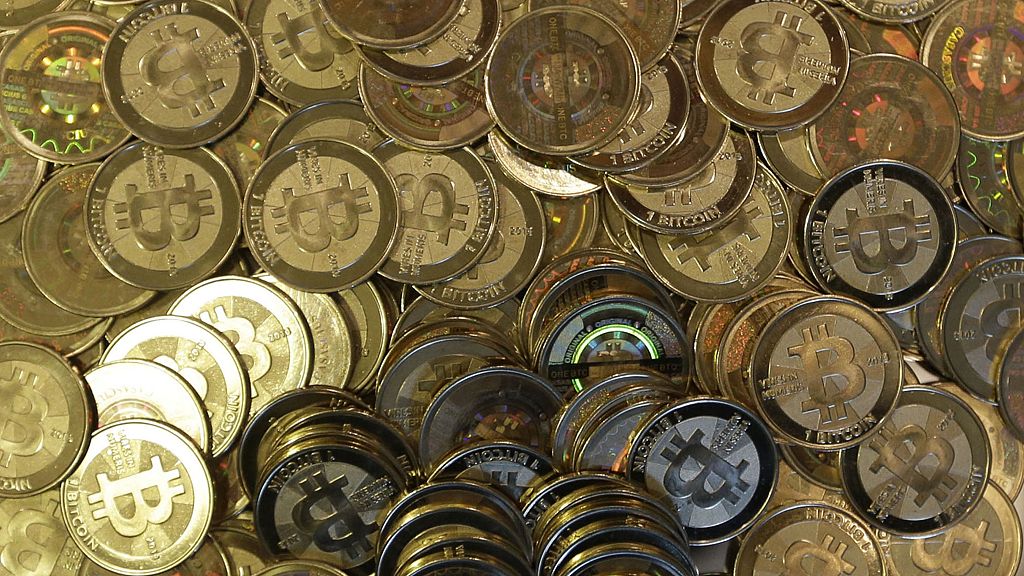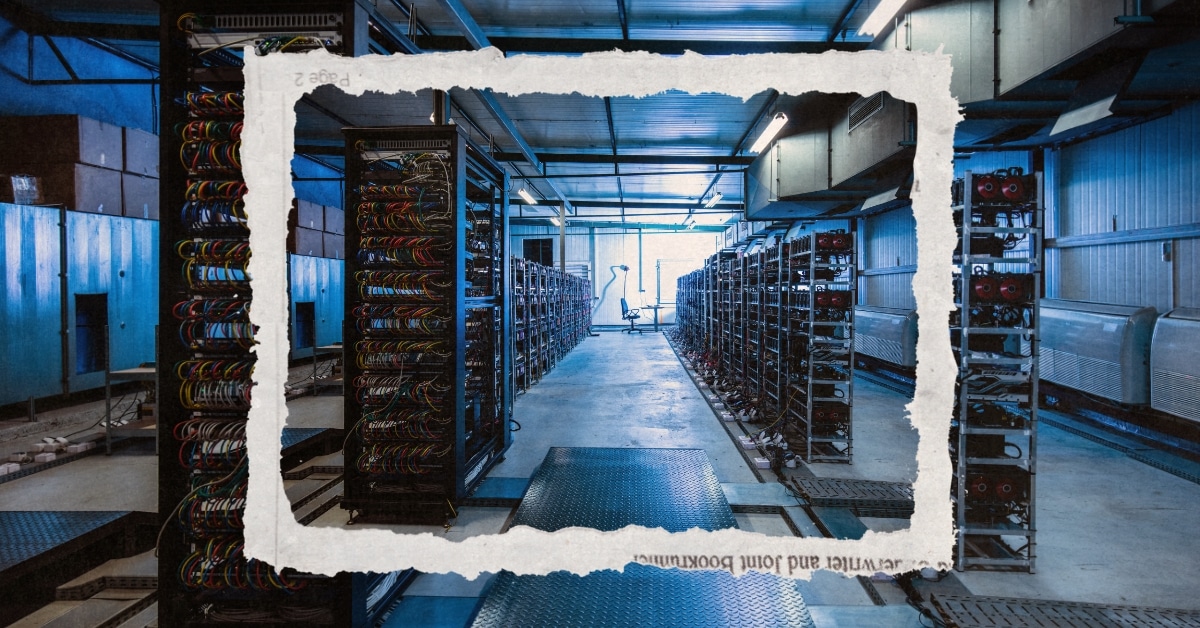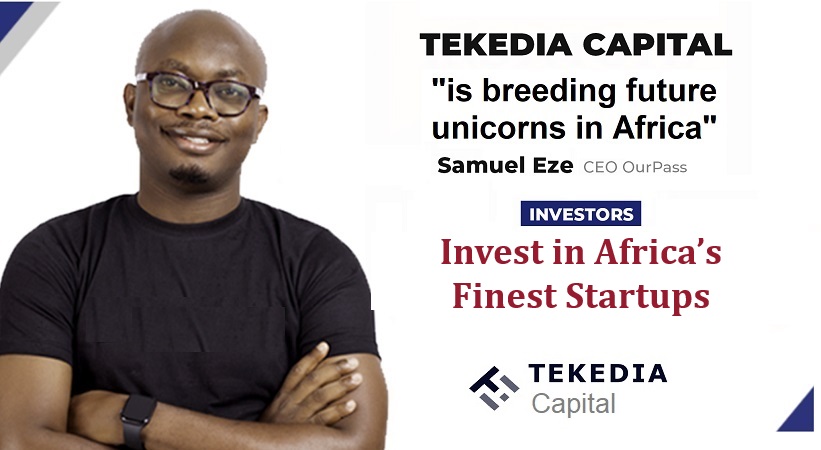News
Get ready for a bumpy ride

Key EU regulation for cryptocurrencies will come into force within the week – and it doesn’t appear that any major specialist players have managed to get permission.
The new regime gives operators such as exchanges and wallet providers the chance to apply for a license that will allow them to operate across the bloc.
Brussels has boasted of being the first global jurisdiction to establish rules tailored to the cryptocurrency market, a market that has seen considerable turbulence and manipulation.
But, with the clock ticking, the jury is still out on whether Europe’s Crypto Asset Markets Act, MiCA, heralds a new era for the industry – or will kill it dead.
After passing the law in June 2023, French Finance Minister Bruno Le Maire said the landmark legislation “will prevent the misuse of crypto-assets, while being conducive to innovation to maintain the attractiveness of the EU.”
A few months later, MP Stefan Berger (Germany/European People’s Party) said that the rules “place the European Union at the forefront of the global token economy.”
Many cryptocurrency users have long rejoiced in its freedom from government control, although some acknowledge that regulatory recognition could offer greater credibility and certainty.
As the prospect of financial regulation looms ever closer, the mood in the industry grows more anxious.
Difficult and uncomfortable
“It’s a difficult and uncomfortable time,” Faustine Fleuret, president of the French cryptocurrency lobby group ADAN, told Euronews, citing tough and unclear rules.
This sadness is shared by Marina Markezic, founder of the Brussels-based European Crypto Initiative, who points out that many cryptocurrency companies have not yet told their customers exactly how the law will work.
On June 3, Binance, one of the world’s leading cryptocurrency exchanges, said it will restrict access to unauthorized crypto coins once MiCA takes effect, but others have not been so frank, it said.
“June 30 is one week away and I, as a consumer, still don’t know what will happen,” Markezic said.
A large chunk of MiCA is dedicated to stablecoins: cryptocurrencies that seek to peg their value to other assets, such as the price of gold or the US dollar.
These are the most difficult parts of MiCA and the first to come into force: other provisions, such as trading licenses, will come into force on 30 December.
But there’s still discussion about what the rules actually mean – for example, whether dealing with stablecoins means having to register as a payment service provider, Fleuret says.
Short notice
Worse, Fleuret says, the European Banking Authority (EBA) published its final set of technical standards only last week, giving traders little chance to prepare.
“Less than two weeks before a big, big, brick of the MiCA regulation comes into force, the people who have to comply didn’t even have all the operational details needed to comply,” he said.
“For newcomers it will be much more complicated, perhaps impossible, to be ready by June 30,” he explained, although he admits that existing payment providers may be in a better position.
An EBA spokesperson told Euronews that the EU agency had finalized and published all 18 sets of standards and guidelines ahead of the June 30 deadline.
“The EBA called on the industry to prepare promptly” for the new stablecoin regime and offered a tool for companies to resolve interpretive questions, the spokesperson added.
No approval?
Confirming Fleuret’s analysis, Euronews has not identified any major cryptocurrency players that have been definitively approved by MiCA.
In April, Paolo Ardoino, CEO of stablecoin issuer Tether, said he was “still discussing with the regulator” his concerns about the law. Circle, whose euro-backed stablecoin appears aimed at EU users, announced last year that it had applied for a MiCA license.
With a week to go, neither company has publicly announced that it has won regulatory approval; neither responded to Euronews’ request for comment.
Both Markezic and Fleuret are still positive about some aspects of MiCA, which in particular will allow crypto companies to operate across Europe with a more or less clear framework.
But Fleuret fears the law isn’t suited to smaller players who tend to dominate the space.
“The problem with MiCA is that it is not proportionate,” he said. “If you are a startup looking to launch a market business right now, you should apply the same rules as Société Générale,” a French bank that is also venturing into financial technology.
And, for all the EU’s bluster about promoting innovation, difficult hurdles seem like a feature rather than a bug.
Big technological fears
Those who created MiCA were motivated in part by fears that Facebook might issue its own form of currency, Libra, tied to a basket of major world currencies.
Finance ministers have railed against the idea of a major foreign tech giant creating a currency that could supplant the euro.
Facebook’s project collapsed, partly due to political backlash, but regulators’ fears were confirmed in spring 2023, when Terra, a stablecoin that supposedly held its value against the US dollar, collapsed under market pressure , causing much of the crypto ecosystem to collapse. with it.
The final version of MiCA imposes strict reserve requirements on euro-based stablecoins and a maximum limit of one million daily transactions for others.
But this could be to the detriment of existing agreements, as operators do not always monitor such information, Markezic says.
“Emissions happen globally and before there was no system on how to align, set up or review… how much is emitted within a specific jurisdiction,” he said. “Sometimes issuers don’t know who holds these tokens.”
Some difficult years
Cryptocurrencies have had a rough few years. Following the Moon incident came a period of turbulence and regulatory backlash, and many of the industry’s figureheads are now in prison.
In the United States, Sam Bankman-Fried was recently sentenced to 25 years after pleading not guilty to fraud and money laundering during his time running cryptocurrency exchange FTX.
Likewise Changpeng Zhao, the founder of Binance, was sentenced to four months after pleading guilty to money laundering.
All this may have tarnished the reputation of cryptocurrencies, but Markezic is confident that legal credibility could herald a new era.
Established providers like banks “are waiting for regulation,” he said, with a clear regulation that potentially takes the technology out of its current, slightly nerdy niche.
“I think we’ll talk less about the technology and less about the stablecoins and … more about the utility and what it can bring to the consumer,” he said. “The benefits are numerous when it comes to seamless transactions, 24/7 processes, etc.”
But even she acknowledges that there will be bumps in the road from today’s Wild West to mainstream credibility.
“Many companies will not have the ability to be compliant,” he said. “Very small startups and innovative companies will likely limit their activities in the EU.”
News
US Cryptocurrency Rules Delayed by ‘Never-Ending’ Lawsuits

Ripple CEO says cryptocurrency industry still seeking regulatory clarity from US
Speaking to Bloomberg News on Wednesday (July 17), Author: Brad Garlinghouse he said America is behind behind other countries which have already adopted cryptocurrency regulations.
“What we’re seeing, where it’s the UK, Japan, Singapore… even the European Union, more than two dozen countries have come together to provide a framework for cryptocurrency regulation,” Garlinghouse said.
“It’s frustrating that we as a country can’t get that regulatory framework in place. And instead, we have this never-ending lawsuit coming from the SEC that doesn’t really address the problem.”
Ripple has been the target of some of these legal disputes. Securities and Exchange Commission (SEC) sued the company in 2020, accusing it of conducting a $1.3 billion operation offering of unregistered securities tied to its XRP token.
However, last year a judge ruled that only Ripple’s institutional sales of XRP, not retail sales, violated the law, a decision widely seen as a victory for the cryptocurrency industry.
As PYMNTS noted at the time, that ruling has “far-reaching repercussions impact across the digital asset ecosystem, which has long maintained that its tokens do not represent securities contracts.”
However, Garlinghouse told Bloomberg on Wednesday that the company cannot wage multimillion-dollar legal battles over each token.
He spoke to the news agency from the Republican National Convention in Milwaukee, where the party is backing the candidacies of former President Donald Trump and Ohio Sen. J.D. Vance, both of whom are considered pro-cryptocurrency.
But Garlinghouse argued that cryptocurrencies “should not be a partisan issue,” and noted that he had recently attended a conference in Washington that included Democrats, including White House officials.
“I think they were there, listening to the industry… it was refreshing to start having that conversation,” she said.
President Joe Biden earlier this year he vetoed a measure which would have ended the SEC’s special rules for crypto-asset custodians. This legislation was supported by both the digital asset industry and the banking industry.
Ripple early this year donated $25 million to the cryptocurrency industry’s super PAC Fair Smoothiewith Garlinghouse stating at the time that such donations would continue every year, as long as the industry had its detractors.
Second Open SecretsWhich monitor spending For campaigns, the PAC has spent $13.4 million this year, much of it to help defeat Rep. Katie Porter’s (D-Calif.) U.S. Senate campaign.
News
The Future of Cybersecurity in the Cryptocurrency Industry

The cryptocurrency space has had a tumultuous journey, with its fair share of ups and downs. As we look to the future, one area that remains a constant focus is cybersecurity. The digital nature of cryptocurrencies makes them inherently vulnerable to cyber threats, and as the industry evolves, so does the landscape of potential risks.
In 2022, the cryptocurrency market faced significant challenges, with over $2 trillion in market value lost. This event served as a wake-up call for the industry, highlighting the need for robust cybersecurity measures. The future of cryptocurrency security is expected to see a shift towards more regulated and established institutions taking the reins of crypto technology and blockchain infrastructure.
The decentralized nature of cryptocurrencies offers numerous benefits, such as transparency and financial inclusion. However, it also introduces unique security challenges. The risk landscape is filled with threats such as hacking, phishing, ransomware attacks, malware, and social engineering. These threats not only lead to financial losses, but also damage the reputation and trust within the cryptocurrency ecosystem.
Mini-MBA Tekedia edition 15 ((September 9 – December 7, 2024) started recordings; Register today for discounts reserved for early bird customers.
Tekedia AI in Business Masterclass Opens registrations Here.
Join the Tekedia Capital Syndicate and IInvest in Africa’s best startups Here.
The decentralized nature of cryptocurrencies offers many benefits, but it also presents unique security challenges. Cyber risks such as hacking, phishing, and ransomware pose threats to the integrity of digital assets. The infrastructure that supports cryptocurrencies is not immune to vulnerabilities, including smart contract flaws and exchange hacks.
To address these vulnerabilities, the infrastructure that supports cryptocurrencies must be strengthened. Smart contract vulnerabilities, exchange hacks, wallet breaches, and flaws in the underlying blockchain technology are significant concerns that must be addressed to ensure the security and integrity of digital assets.
As cybercriminal tactics and techniques become more sophisticated, the cryptocurrency industry must stay ahead of the curve. The future will likely see more targeted attacks, exploiting weaknesses in infrastructure, networks, and human factors. This requires a proactive and multifaceted approach to cybersecurity.
To mitigate these risks, several measures must be adopted:
Strengthening security measures: Developers, exchanges, and wallet providers must improve security protocols, use strong encryption, implement multi-factor authentication, and conduct regular security audits.
Education and awareness: Users should be educated on best practices for protecting their digital assets, including using strong passwords, recognizing phishing attempts, and using hardware wallets for secure storage.
Looking ahead, the cryptocurrency industry is expected to see an increased focus on robust security measures. Blockchain projects and exchanges are likely to invest in advanced encryption techniques and decentralized storage solutions to protect user assets. The future impact of cyber risk on cryptocurrencies will depend on the collective efforts of stakeholders to address vulnerabilities and strengthen security measures.
Collective efforts by stakeholders in the cryptocurrency space are crucial to address vulnerabilities and strengthen security measures. While challenges persist, advances in cybersecurity technologies and practices offer hope for a more secure and resilient cryptocurrency ecosystem.
The future of cybersecurity in the cryptocurrency industry depends on finding a balance between innovation and regulation. It requires a collaborative effort from all parties involved, from developers to end users, to create a secure environment that fosters trust and growth in the industry. As we move forward, it is critical that lessons learned from past events guide the development of stronger security measures, ensuring the longevity and stability of cryptocurrencies as a vital part of the modern economic toolkit.
Like this:
Like Loading…
News
Bullish XRP and RLBK price predictions rise, outpacing the broader cryptocurrency market, prompting Shiba Inu holders to switch!

Bitcoin’s one-week surge from $60,000 has pushed other cryptocurrencies into an uptrend. However, for many altcoins, this trend has been temporary. Altcoins such as XRP and Shiba Inu (SHIB) have experienced price drops. However, Rollblock, a new altcoin on the Ethereum blockchain, has thrived during this period, attracting thousands of investors looking for long-term growth.
XRP’s Nearly 30% Growth Over Last Week Drops as Selling Pressure Increases
XRP is seeing further price decline as Ripple investors withdraw their profits from the token. The surge in XRP’s price to $0.64 in the past week has provided investors with a perfect opportunity to increase their returns in the short term. With the ongoing sell-off in XRP, XRP has jumped over 8% in the past day and is now trading at $0.59. However, analysts tracking XRP indicators predict that XRP could still extend its gains by over 30% in the coming weeks.
Shiba Inu (SHIB) marks its third consecutive day of losses
Shiba Inu (SHIB) is in a period of adjustment after a week of strong gains. In the last 24 hours, SHIB has seen a jump of over 7%, reflecting a natural market fluctuation. Analysts are observing a death cross on the Shiba Inu chart, which historically signals the potential for future opportunities as the market stabilizes. As investors explore new possibilities, some are diversifying into promising altcoins like Rollblock (RBLK) to strategically rebalance their portfolios and capitalize on the emerging trend.
Rollblock (RBLK) Up Another 7% as New Investors Join Pre-Sale
Rollblock (RBLK) has taken the cryptocurrency market by storm, having attracted investors from more popular altcoins like Shiba Inu (SHIB) and XRP. Rollblock’s growth is attributed to its utility in the $450 billion global gaming industry.
Rollblock aims to use blockchain technology to bridge the gap between centralized and decentralized gambling. With blockchain technology, Rollblock secures every transaction in its online casino, providing transparency and convenience to millions of players who are uncomfortable placing bets on other iGaming platforms.
This innovative use of blockchain technology in the industry has grown Rollblock to over 4,000 new users in less than two months. With plans to add sports betting, this number is expected to grow exponentially in Q3.
Rollblock uses a revenue sharing model that splits up to 30% of its casino’s weekly profits with token holders. This happens after Rollblock buys back $RBLK from the open market and uses half of it for rewards. The other half is burned to increase the price of $RBLK.
Rollblock price has seen four increases in the past month with $RBLK tokens now selling for $0.017. Analysts predict that at the current growth rate, Rollblock could increase by over 800% before the presale ends. For investors looking for a long-term token with growth potential, phase four is the best time to buy Rollblock before its price skyrockets!
Discover the exciting Rollblock (RBLK) pre-sale opportunities now!
Website:https://Rollblockpresale.io/
Social: https://linktr.ee/Rollblockcasino
No spam, no lies, just insights. You can unsubscribe at any time.
News
Texas Crypto Miners Turn to AI as Crypto Declines

As cryptocurrency mining becomes less profitable, Texas cryptocurrency mining companies are switching to supporting artificial intelligence companies.
Bitcoin miners, with their sprawling data centers and access to significant energy resources, are ideally suited for computationally intensive AI operations, and as cryptocurrency mining becomes less profitable, companies see this shift as a logical answer to their problems.
On Thursday, Houston-based Lancium and Denver-based Crusoe Energy Systems announced a multibillion-dollar deal to build a 200-megawatt data center near the West Texas city of Abilene to support advanced artificial intelligence applications such as medical research and aircraft design, CNBC reported. The plant represents the first phase of a larger 1.2 gigawatt project.
Lancium and Crusoe’s move into AI mirrors a broader trend among bitcoin miners. The combined market capitalization of the top U.S.-listed bitcoin miners hit a record $22.8 billion in June. Companies like Bit Digital and Hut 8 are diversifying into AI, with Bit Digital securing a $92 million annual revenue deal to supply Nvidia GPUs and Hut 8 raising $150 million to expand its AI data center.
But the growing popularity of these operations also presents challenges, particularly for the Texas power grid. Last month, the Electric Reliability Council of Texas announced that the state is expected to nearly double its energy production by 2030 to meet the high energy demands of data centers and cryptocurrency operations.
Lieutenant Governor Dan Patrick expressed concern about the projections.
“Cryptocurrency miners and data centers will account for more than 50% of the additional growth. We need to take a close look at these two sectors,” He wrote on Twitter/X. “They produce very few jobs compared to the incredible demands they place on our network. Cryptocurrency miners could actually make more money selling electricity to the network than they do from their cryptocurrency mining operations.”
Analysts predict significant growth in data center power capacity, which is expected to account for up to 9% of U.S. electricity consumption by 2030.
The operations also pose challenges for nearby cities. Earlier this month, TIME reported that a crypto-mining facility was seriously compromising the health of residents in the city of Granbury. TIME reported more than 40 people with serious health problems, including cardiovascular disease, high blood pressure and hearing loss. At least 10 of the residents needed to go to the emergency room or an urgent care facility.
The disturbances were caused by the extreme noise generated by the crypto-mining facility’s fans, which are used to keep the machines cool. While the proposed data center in Abilene would use liquid cooling systems, it’s still unclear whether the facility’s operations would pose a health risk to local residents.
-

 Nfts1 year ago
Nfts1 year agoShardLab Launches ZK-Based Tool for Digital Identity and NFT Vouchers
-

 News1 year ago
News1 year agoWallet recovery firms are abuzz as stranded cryptocurrency investors panic in the bitcoin boom
-

 Bitcoin1 year ago
Bitcoin1 year agoBitcoin, Ethereum, Solana and Cryptocurrency Markets Look Ready to ‘Send’ as Stars Align, According to Investor Chris Burniske
-

 Altcoins1 year ago
Altcoins1 year agoThree Altcoins Poised for Significant Growth in 2024: ETFS, OP, BLAST
-

 Altcoins1 year ago
Altcoins1 year agoAccumulate these altcoins now for maximum gains
-

 Nfts1 year ago
Nfts1 year agoOG Crypto Artist Trevor Jones Unveils Groundbreaking Collection of Ordinals | NFT CULTURE | NFT News | Web3 Culture
-

 Bitcoin1 year ago
Bitcoin1 year agoBillionaires are selling Nvidia stock and buying an index fund that could rise as much as 5,655%, according to some Wall Street analysts
-

 Videos9 months ago
Videos9 months agoKamala just won the boner! [Bad For Crypto]
-

 Videos1 year ago
Videos1 year agoLIVE FOMC 🚨 Could be CATASTROPHIC for Altcoins!
-

 News1 year ago
News1 year agoA Guide for Newcomers & Beginners – Forbes Advisor
-

 Videos1 year ago
Videos1 year agoAttention: a historically significant BITCOIN signal has just appeared!
-

 Videos1 year ago
Videos1 year agoSTOCK MARKET FUD! ⚠️ [Why This Is GREAT For Bitcoin Traders!]















